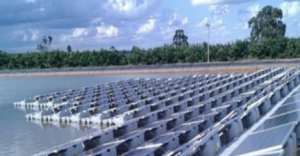
For a long while, the job of solar power was to deliver daytime electricity – starting to pump the juice in earnest somewhere around 10 a.m., and finishing at 2 p.m. And every single drip of electricity was needed to be used to get investors into the project. This reality is no longer. For instance – we’re now talking about how in Minnesota overbuilding solar power and dumping “extra” electricity is cheaper than seasonal storage and gas over the coming decades. This ain’t your parent’s solar power.
In July of this year, a project in Connecticut was completed with a DC to AC ratio – the ratio of total solar panel wattage to solar inverter capacity – of 1.8 to 1. This value is significant (greater than the average closer to 1.3:1) because it shows that large developers have fully grasped, and are deploying, a strategy that takes full advantage of cheap solar panels to gain greater benefit. While a normal solar power plant might start clipping—i.e., dumping electricity produced by the solar panels that the inverter isn’t able to export—as the day approaches 12 noon, a plant like this will begin clipping much sooner. Generally, this wasted electricity is lost revenue. and designers abhor it. However, a plant like this will also offer a more consistent amount of electricity delivered to the power grid—starting much earlier and ending much later. As well, it will also offer a greater amount of electricity during the low sun wintertime periods. An analysis by Fluence suggested that these extra solar panels, beyond the 1.3:1 ratio, cost approximately 60¢/Wdc to install—far cheaper than standard system pricing.

What might be the most significant solar project of the year was developed by 8minute Solar Energy—the Eland Solar Power Plant totalling 400MWac / 600(?)MWdc plus 300MW/1,200MWh of energy storage. The facility will sell its electricity to two separate California buyers at just under 4¢/kWh. The plant was, to the best of this author’s knowledge, the first *large* solar plus storage facility that could arguably be considered a true power plant.
But the real kicker of this facility, and the reason there is a “?” after the 600 MWdc above, is the capacity factor that approaches 60% per CEO Tom Buttgenbach. This value is far above the peaks of AC capacity factors found in the 35% range per recent research. There are a few reasons this plant can offer a value like this:
- The plant is located in the Mojave Desert with some of the world’s best sunlight
- Single axis trackers “widen the shoulders” and up production overall by 15-30%
- DC coupled energy storage captures and later on delivers the clipped electricity
- And last, but with a question mark as the actual values aren’t known, it is probable that bifacial solar modules and/or an oversize DC to AC ratio are pumping out extra electricity for those batteries to grab.
We can assume that an advanced group like 8Minute (the time it takes for light to get to Earth from the Sun) Solar Energy has done the math on all of these potential output-increasing techniques, because this is the same group that has heavily oversized DC to AC ratios of 3-4-5 to 1 and energy storage with 15 hours of capacity that will deliver electricity 24 hours a day on their drawing blocks.

The third facility is one that delivers its solar electricity only at night. Engie was awarded a project in Guam that couples 50MWdc of solar power with 50MW / 300MWh of energy storage. The AC size of the power plant was released. The facility will deliver its electricity for up to seven hours into the evening, suggesting an inverter sizing of approximately 42MWac, and a relatively normal DC to AC ratio of 1.16:1. The facility will deliver 85 GWh of electricity per year, approximately 5% of the island’s annual 1,600GWh needs. Though there is no pricing available yet, as the final power purchase agreement is being negotiated, this will be a unique data point for developers and policy makers to consider.
These three projects—and others—herald the next stage of solar power. A stage in which solar power plants will be designed as the grid needs, to meet the requirements of society, versus society learning to absorb what the sun has to offer. And these plants are why solar power, along with energy storage and wind generation, will come to dominate our future clean energy power grids.





